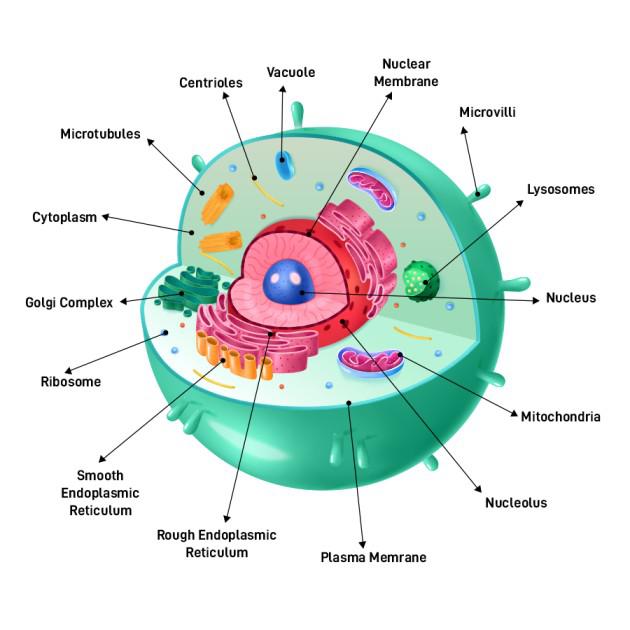MCQ ON RIBOSOMES class 11 for NEET | RIBOSOMES class 11 | MCQ RIBOSOMES with Answer | Check the below NCERT MCQ question for class 11 Biology chapter 8 based on the RIBOSOMES with Answers.

MCQ ON RIBOSOMES class 11 for NEET
MCQ on RIBOSOMES class 11 Biology with answers were prepared based on the latest pattern.We have provided class 11 Biology MCQs questions on RIBOSOMES with Answers to help students understand the concept very well.
MCQ RIBOSOMES is useful for NEET / CSIR / UGC / CBSE / ICSE / AIIMS / EXAM / AFMC EXAM / STATE LEVEL MEDICAL EXAM 2022-23, 2023-24
Introduction:-
Ribosomes are complex molecular machine found inside the living cells that produces protein from amino acid during a process called protein synthesis.Ribosomes are specialised cells organelles and are found in both prokaryotic cells and eukaryotic cells.Every cell living cell require ribosomes for protein factory. The cell organelles are function by binding to a mRNA.
Ribosomes are granular structures first observed under electron microscope as dense particles.
MCQ ON RIBOSOMES class 11 for NEET
1.Ribosome are the granular structure first observed under the electron microscope as dense particles by
(a) Brown
(b) Camilo
(c) George palade
(d) all the above
Ans (c) George palade
2. Ribosomes are composed of
(a) RNA and proteins
(b) RNA and DNA
(c) RNA and glucose
(d) DNA and proteins
Ans. (a) RNA and proteins
3. The organelle which are not surrounded by any membrane?
(a) mitochondria
(b) Golgi body
(c) ribosomes
(d) nucleus
Ans. (c) ribosomes
4. The eukaryotic ribosomes are
(a) 80S
(b) 70S
(c) both a and b
(d) none
Ans.(a) 80 S
5. Prokaryotic ribosomes are
(a) 80 S
(b) 70 S
(c) both a and b
(d) none
Ans.(b) 70 S
6. The prokaryotic ribosomes are 70S .Here ‘S’ stands for
(a) SI unit
(b) system
(c) Svedberg’s unit
(d) solution
Ans.(c) Svedberg’s unit
7. ‘S ‘ here Svedberg’s unit indirectly measures
(a) density
(b) size
(c) both a and b
(d) none of the above
Ans.(c) both a and b
8. Many ribosomes may associate with a single mRNA to form multiple copies of a polypeptides simultaneously .Such string of ribosomes found in
(a) cytoplasm
(b) polysome
(c) Golgi apparatus
(d) mitochondria
Ans.(b) polysome
ALSO READ:-
● YOU CAN WATCH BIOLOGY SIR Youtube channel
9. DNA is not present in
(a) nucleus
(b) mitochondria
(c) chloroplast
(d) ribosomes
Ans. (d) ribosomes
10.Protein synthesis takes place in
(a) mitochondria
(b) Golgi apparatus
(c) chloroplast
(d) ribosomes
Ans. (d) ribosomes
11. Eukaryotic cells contain
(a) 70S
(b) 80S
(c) both a and b
(d) none
Ans.(c) both a and b
12. The subunits of 80 ribosomes are
(a) 40 S and 60 S
(b) 40 S and 50 S
(c) 50S and 30 S
(d) none of the above
Ans.(a) 40 S and 60 S
13. How many RNA strands are there in larger subunits of ribosomes?
(a) 3
(b) 2
(c) 1
(d) 4
Ans. (a) 3
14. Ribosomes are found attached to surface of ER makes them RER
(a) free
(b) neutral
(c) partial
(d) bounded
Ans.(d) bounded
15. Tiny granular structure and involved in the process of protein synthesise
(a) nucleus
(b) chromosome
(c) chromatin
(d) Ribosomes
Ans. (d) ribosomes
16……. synthesis protein destination to remains within it
(a) matrix Ribosomes
(b) neutral Ribosomes
(c) acidic ribosomes
(d) none of the above
Ans.(a) matrix Ribosomes
17. The ribosomal domain which is responsible for the translation is
(a) exit domain
(b) page domain
(c) web domain
(d) translation domain
Ans.(d) translation domain
18. Which of the following ribosomes sites for binding t-RNA.
(a) A site
(b) P site
(c) E site
(d) all the above
And.(d) all the above
19. Palade particles are
(a) mitochondria
(b) cytoplasm
(c) thylakoids membrane
(d) Ribosomes
Ans. (d) ribosomes
20. Ribosomes are often called
(a) microsomes
(b) RNA particles
(c) Dictysomes
(d) none of the above
Ans.(b) RNA particles
21.The Ribosomes are found in
(a) mitochondria
(b) chloroplast
(c) nucleus
(d) all the above
Ans. (d) all the above







Leave a Comment